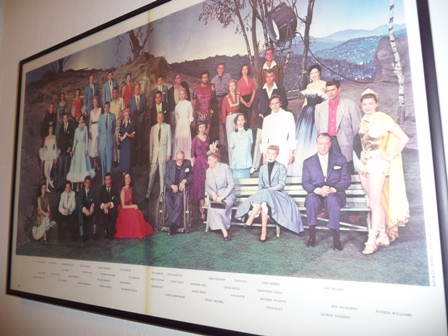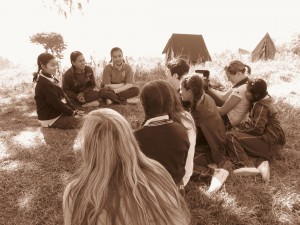At 83 years old, Finnish dancer and actress Taina Elg still carries herself with a dancer’s posture. Much of her vigor is probably due to her active lifestyle: she still has a manager who helps her scout for roles in commercials, for example. Elg also enjoys going to the movies and to the theater. Elg was born and grew up in Helsinki but spent much of her childhood summers in Impilahti near the Soviet border, a place which they had to abandon as a result of the Second World War. Her father, a talented pianist, died in the war.
Among Elg’s first experiences with cinema was seeing Ben Hur in Sortavala. Enchanted by the film, she and her friends memorized the names of the actors and collected cards with their names and pictures on them. Elg began acting and dancing at a very young age, appearing in her first film at the age of ten. She began to train as a professional ballet dancer at the Finnish National Ballet in Helsinki and went on to study ballet in Stockholm and Gothenburg; “at the time, studying abroad was extremely uncommon for Finnish students,” she says.
She remembers how everyone in Sweden was especially nice to the small group of Finnish girls who were starting their lives anew after the war. Elg was supported financially by her Swedish host family, who gave her the opportunity to continue her dance training at the esteemed Royal Ballet in London.
Elg was soon discovered in London by an American movie producer. She got a seven-year contract with MGM, meaning not just opportunities in Hollywood films, but also a magnificent chance to train further as a performer.
Elg speaks fondly of her Italian singing coach at MGM. Each actor also had drama coaching in groups and one-on one. “During these sessions we worked on things like using our eyes when acting.”
A dancing background became a valuable asset for Elg: She was able to obtain roles in such films as Les Girls (1957) that required skills in both dancing and acting. Les Girls was a hit and so was Taina. She was awarded with a Golden Globe first in 1957 for Best Female Foreign Newcomer (Gaby, 1956) and again in 1958 for Best Actress in a Musical (Les Girls).
Tough competition behind the scenes has always defined Hollywood, but Elg says she was fortunate to work with many people whom she remembers fondly: one of them was Les Girls director George Cukor, whom Elg describes as “the ideal director.” Elg has also followed the career of Sophia Loren and her fellow cast members from the musical Titanic.
Much of Elg’s later career has focused on Broadway musicals and theater. She has appeared onstage in e.g. West Side Story and The Sound of Music, as well as A Little Night Music and Where’s Charley?, for which she earned a Tony nomination.
Les Girls © Metro-Goldwyn-Mayer MGM
Taina tells us that she rarely watches her own films, but admits that Les Girls remains one of her all time favorites. Old dance movies and a selection of French films are also close to her heart.
Elg has lived in New York for over 30 years, and loves her home city. “In New York you have the opportunity to meet people from all around the world; this gives New Yorkers a magnificent possibility to learn from one another,” she says.
Taina visits her son, the gifted jazz musician Raoul Björkenheim, and her old friends from the days of the Finnish National Ballet in Finland almost every summer and she feels proud of her country of birth. “There is something so decent about how for instance schooling is valued. It is also great that young people today have more opportunities to travel and put their education to use in an international context.”
One day at MGM all actors and actresses who were present that day were called in for a group photo. Taina Elg second from the right in the back row wearing a red shirt.
Taina is always ready to volunteer at events of the Finnish community in New York; she has read poetry at many an Independence Day celebration of the Finlandia Foundation New York Chapter, and recently volunteered for a promotional video for Finland Center’s new Kota Project (video can be seen here: http://vimeo.com/cwmedia/review/74212132/0b5313fe00)
Last year Taina was invited to attend the Sodankylä Film Festival in northern Finland as a star guest and was introduced to the Finnish film historian and director Peter Von Bagh. He will soon visit New York to attend the screening of his film, The Story of Mikko Niskanen, as well as the screening of director Mikko Niskanen’s Eight Deadly Shots at MoMA’s International Festival of Film Preservation.
When we ask Elg how she would advice aspiring Finnish actors and actresses dreaming of an international career, she emphasizes the importance of having fluency of the English language. “The inability to produce a certain kind of dialect, in this case American English, can be a major hindrance,” she says.
Interview: Marjo Eskola and Jaana Jumisko
Article: Finland Center Foundation, and Marjo Eskola
Photos: Marjo Eskola, Jaana Jumisko, and MGM












